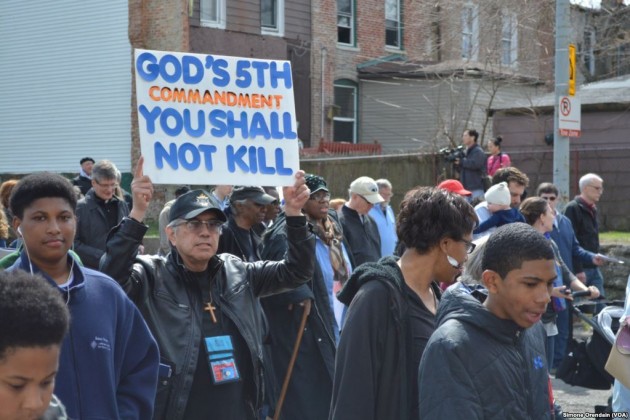A whopping 27 new shows are being added to network TV this fall and only two of them feature a predominately black cast.
The sitcoms "Everybody Hates Chris" and "Love, Inc." will debut Sept. 22 on UPN, currently the home of most black sitcoms.
UPN, which is owned by media giant Viacom, carries seven out of eight shows featuring a predominately black cast, which includes "Eve," "Girlfriends," "All of Us," "One on One," "Cuts" and "Half and Half," in addition to "Everybody Hates Chris" and "Love, Inc."
UPN also served as the home of the Taye Diggs vehicle "Kevin Hill," which was not renewed after its debut last fall. "Kevin Hill" was the first drama with an African American star and a minority ensemble since CBS’ "City of Angels" was canceled in 2001.
The only Big Four network carrying a show with a largely black cast is Fox, which airs "The Bernie Mac Show", leaving CBS, NBC and ABC (which canceled "My Wife and Kids" after four seasons) fairly whitewashed.
Four years after the NAACP decried the lack of diversity on network TV and threatened a boycott, network television has seen a slight increase in minorities as a whole in front of the cameras. As of 2003, CBS had 99 minority actors in recurring or regular roles, while Fox had 121. ABC and NBC doubled their numbers to 74 and 81 respectively.
Maureen O’Ryan, the Chicago Tribune’s television critic, believes that the quality of most of these roles leaves something to be desired.
"We see far too much of what I call TBF: The Black Friend," she said. "That’s my term for minority characters who are in supporting roles, and who are rarely developed beyond being black (or Asian or Hispanic) and being the friend."
Ryan added, "Beyond the phenomenon of TBF, not having minority casts in major network shows means that a large segment of our society is invisible. People who might never interact with African-Americans in their daily lives are not being shown on their TV screens that African-American families relate like any other families – When I was growing up, "The Cosby Show," "A Different World" and "Good Times" made me (I hope) less judgmental and more accepting of people who might have a different skin color than I do."
Some shows have developed black and other minority characters beyond being simply the sidekick. ABC’s midseason hit medical drama "Grey’s Anatomy" has an Asian and black woman in key supporting roles. The popular NBC sitcom "Scrubs" features a black man and a Latina in starring roles. UPN’s critically lauded but ratings deficient "Veronica Mars" also features a black man in a starring role, and features a cadre of racially and ethnically diverse guest actors.
However, there is only one show with a largely Latino cast: "The George Lopez Show" on ABC. And there hasn’t been a show featuring a predominately Asian cast since ABC’s "All-American Girl" debuted in 1994. It lasted a season.
The truly telling numbers can be seen in the amount of minorities behind the scenes. According to a 2003 report from the Writers Guild of America, west, the number of minority writers increased to 205 out of a total of 1,576. It is important to note, however, that the guild counts women, people older than 40, people with disabilities, and gay and lesbian writers as minorities, too, in addition to racial and ethnic minorities.
The Directors Guild of America released a report in 2003 that illustrated the lack of minority directors in television. In 2003, white males had directed more than 80 percent of television’s top 40 shows. Thirteen out of those top 40 didn’t hire minorities, 10 had not hired women and three had excluded both minorities and women. Out of 860 episodes from the 2002-2003 season, 82 percent were directed by a white male, 11 percent by women, Latinos directed two percent, African-Americans directed five percent and Asians a mere one percent.
Ryan believes that working with these trade guilds and strengthening and enlarging "
whatever programs they might have for low-income or minority students" could help increase diversity in front of and behind the camera. She also believes that "educating and encouraging casting directors and networks to be as colorblind as possible" could increase the amount of people of color on network TV. "It seems to me there are many roles that could be filled by minority actors that are not."
Ryan also advocated grassroots campaigns to spread awareness and possibly effect change.
Networks – are sensitive to the idea that they have a duty to the public and, more importantly, hate bad publicity," she pointed out. "If online campaigns and letter-writing campaigns can be organized to save TV shows, why not do the same for minority concerns?"


